 How To Follow A Ketogenic Diet
How To Follow A Ketogenic Diet
A ketogenic diet has been shown to help people lose stubborn weight, drastically reduce inflammation, boost energy, and improve brain health (1). With all of these benefits you might be wondering how do I follow a ketogenic diet?
The research and consistent testimony behind a ketogenic style of eating is compelling. By teaching your body to burn fat for fuel instead of sugar, you improve the function of almost every cell in the human body. This is likely due to the anti-inflammatory effect of being in ketosis as well as the efficient energy production that takes place from ketones.
This article breaks down what exactly a ketogenic diet is and how you can develop a ketogenic plan that is ideal for your needs!
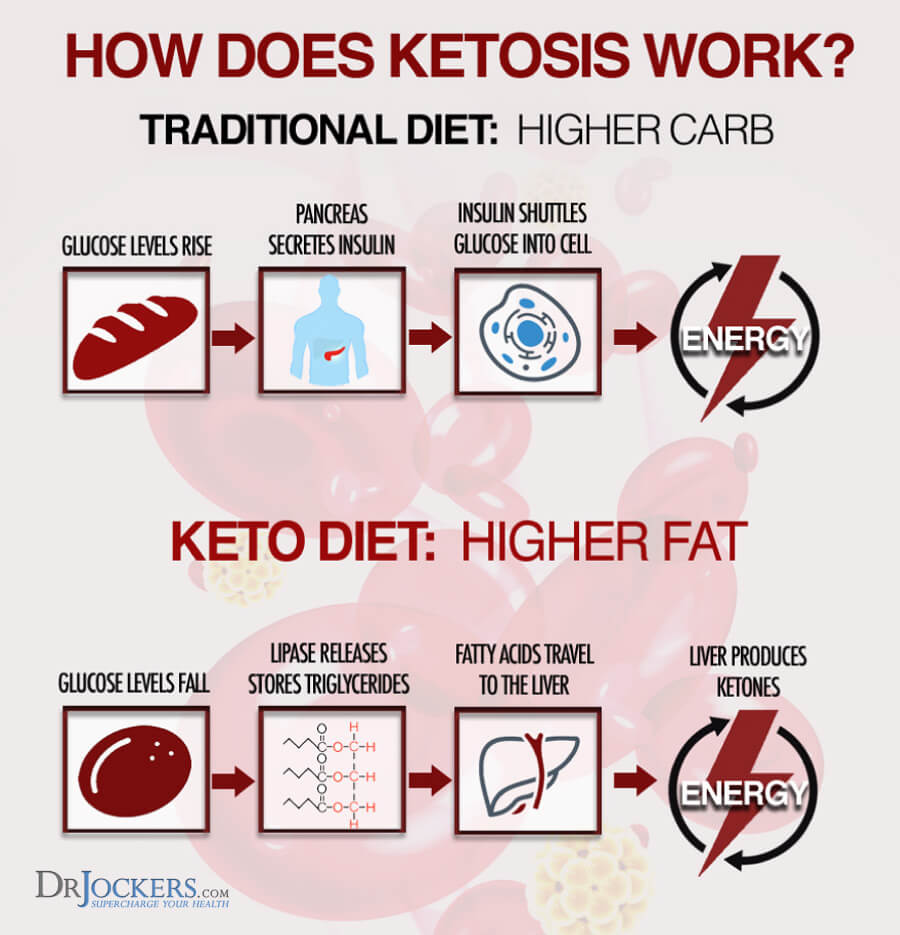
Why Would One Follow A Ketogenic Diet?
The goal of a ketogenic diet is simple, to convert the body’s primary fuel supply from sugar to fat. Fat is converted into ketones which are very efficient for energy production while also limiting metabolic waste that contributes to inflammation.
To get into this state, you must follow a high-fat, low-carb, moderate-protein nutrition plan. By making this simple dietary change, blood sugar drops to a level where the body must learn to utilize fat to survive.
At this point, the body begins to convert fatty acids into ketones which are then used by the cells in the brain and body to produce energy. This state is sometimes referred to as being keto-adapted.
Because ketones result in more energy and lowered inflammation, you can expect to enjoy a heightened sense of wellbeing, a sharper mind, and a natural increase in fat loss.
Why Most People Are Not Keto-Adapted
The body naturally favors sugar over fat as an energy source. At the same time, most Americans have a crazy high reliance on carbs and sugars as the primary source of calories in their diets.
This is why a ketogenic diet is needed to essentially re-teach the body to use fat for energy. Most people spend the majority of their life in a sugar-burning state and their cells lose the metabolic flexibility necessary to burn fat.
This is why It usually takes about 2-3 weeks for someone to become fully keto-adapted after beginning a ketogenic diet. Even though the body will begin to produce ketones within a few days, it takes longer for the cells to begin converting them into energy.
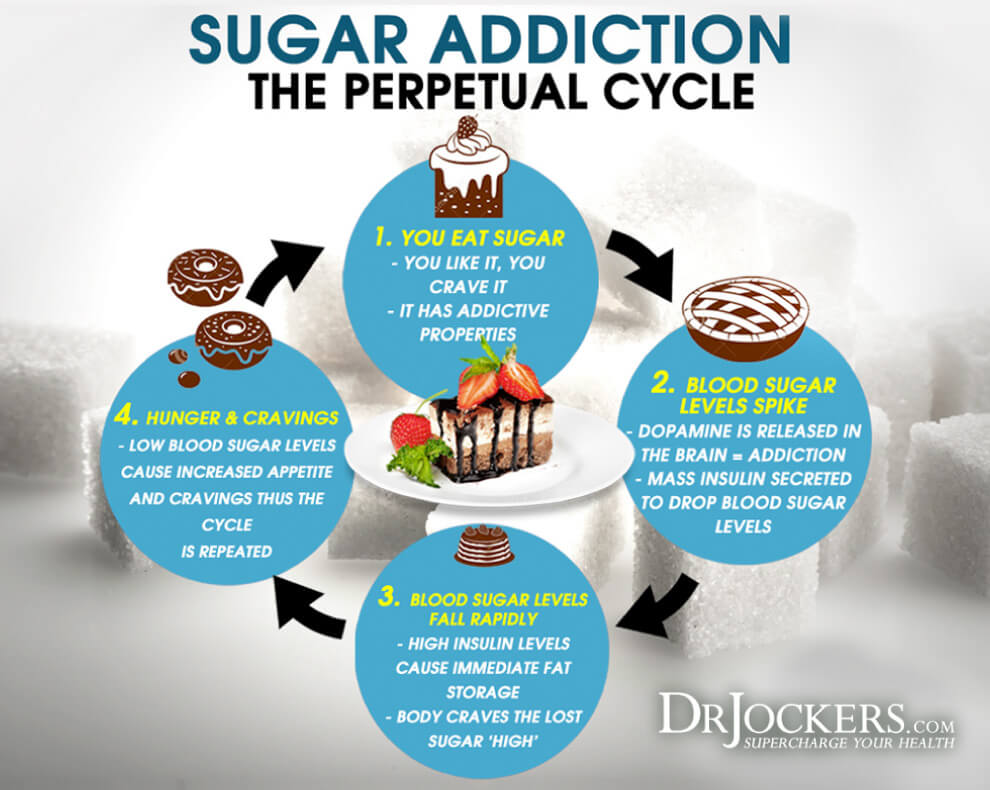
Ketogenic Macronutrient Proportions
While macronutrient needs can change based on individual needs and activity levels, the general breakdown looks like this:
Low Carbohydrate: 5-10% of calories from net carbs (total carbs – fiber)
Moderate Protein: 20-30% of calories from protein
High Fat: 60-80% of calories from fat.
This is a great blueprint to start with. Some individuals need to stick to 5% carb range while others can get away with 15%. If you are more active you will likely need more protein and more overall calories in general.
This is where measuring your ketones can be very helpful! I would recommend tracking your ketone levels using a Ketonix breath monitor or a blood ketone monitor like this one to determine where you feel best.
Fundamental Diet Swaps
As I mentioned already, Americans love their carbs. Take a look at any given meal in the Standard American Diet and you will see lots of grains and starches like bread, pasta, potatoes, cereals, and corn.
Following a ketogenic diet requires ditching these foods and replacing them predominantly with high-fat foods. It is not enough to just eat tons of fat however, these need to be healthy sources of fat. Your body also uses fats to make new brain tissues and insulation for your nerves so healthy fats mean healthy brain!
Ketogenic friendly fats that I recommend are things like grass-fed butter, coconut oil, MCT oil, pastured eggs, olive oil, olives, and avocados. High-fat nuts like macadamias can also be great as a snack.
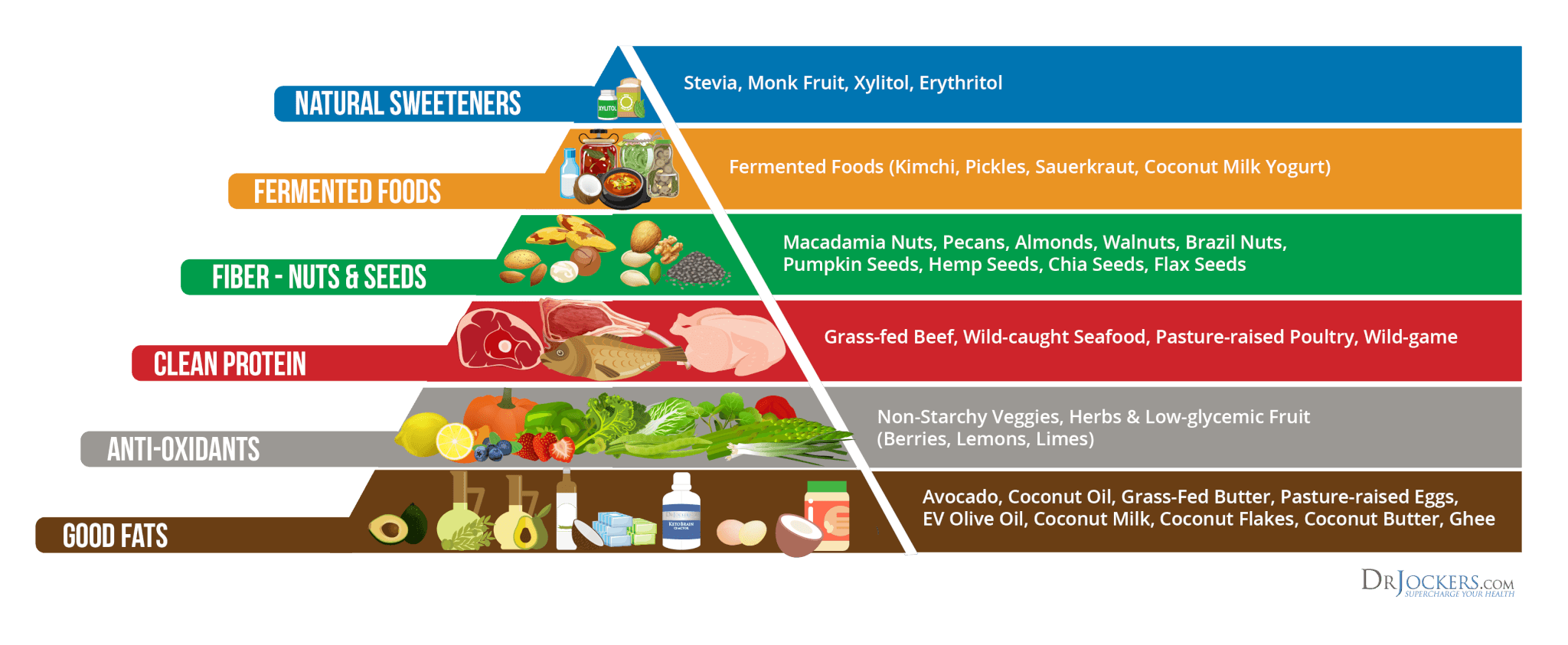
Meals
For me, the primary reason to be on a ketogenic diet is for health and performance. While some advocate for high consumption of bacon and other processed animal products, I like to focus on maximum nutrition while minimizing toxins.
As far as meal structure goes, you can either intermittent fast or consume regular meals. If you are someone who handles fasting really well, then I would recommend fasting through breakfast and consuming two meals later in the day.
If you do not do well with fasting then consume 3-4 meals evenly spaced throughout the day. Anything more than 4 meals may increase your blood sugar even if they are ketogenic.
Some of the typical meals I recommend are:
Breakfast: 2-3 Pasture-Raised eggs cooked in coconut oil with low-carb veggies (spinach, mushrooms, broccoli, etc.) OR One of our ketogenic coffee recipes.
Lunch: Chocolate Avocado Pudding or Gut Healing Protein Pudding (Or something similar)
Dinner: 4oz of Pasture-Raised Meat cooked in coconut or MCT oil (Pour on the meat after cooking) covered in lemon/lime juice, sea salt, and plenty of herbs. Along with a nice healthy portion of broccoli or other veggies covered in grass-fed butter, salt, and herbs.
Dessert: There are now tons of great keto dessert recipes that use stevia or monk fruit as a non-caloric sweetener. I make these Keto Cookies and this Coconut Milk ice cream when I’m looking for something sweet after dinner. The healthy fats help keep you full and blood sugar balanced so you can sleep soundly through the night.
These are just some ideas to get you going, but hopefully you get the general idea. These meals are high in fat and full of nutrition!
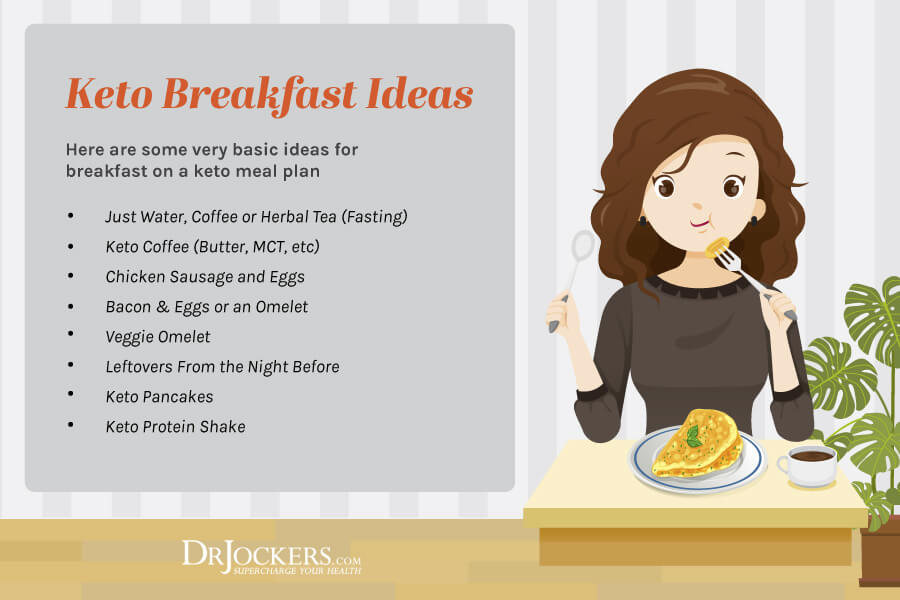
Salt and Other Trace Minerals
One important aspect of following a ketogenic diet that is often overlooked is making sure you get enough sodium and minerals. When you are running on carbohydrates your body will retain sodium due to elevated insulin levels (2). Once you are running on ketones however, your body excretes sodium at a much higher level until you are fully keto-adapted.
This means while eating ketogenic it is important to use salt generously on your foods. I recommend either a pink Himalayan or Celtic sea salt as these contain naturally occurring minerals in addition to sodium.
So, salt your foods well but also eat plenty of mineral-rich foods like celery, cucumbers, and seaweeds. As an additional source of minerals, you can also sip on organic broth throughout the day.
Standard or Cyclical?
There are two main types of ketogenic diet: standard and cyclical and one additional strategy for high intensity athletes called the targeted ketogenic diet.
Standard Ketogenic Diet: This is where you are trying to adapt your body to be in ketosis permanently. Here your carbs are limited to about 20-50 grams per day with moderate protein (0.8-1.2 grams/kg of bodyweight). The remainder of calories come from healthy fats.
Cyclical Ketogenic Diet: This where you periodically consume higher amounts of carbs in order to temporarily come out of ketosis. How often you cycle out really depends on your preference. I often recommend starting out with one day every week while some people like to do once a month.
Targeted Ketogenic Diet: This is for high intensity athletes. On this diet, you go low-carb for all meals other than right before the high intensity activities. About 30 mins-1 hour prior to the activity you take in 25-50 grams of net carbs.
Note About Carbs: When we are talking about carbs, we are talking net carbs. When you are looking at the nutritional information on a food, net carbs = total carbs – fiber. This is because fiber is technically a carbohydrate but it is not metabolized into energy like other carbs and will not have any effect on blood sugar.
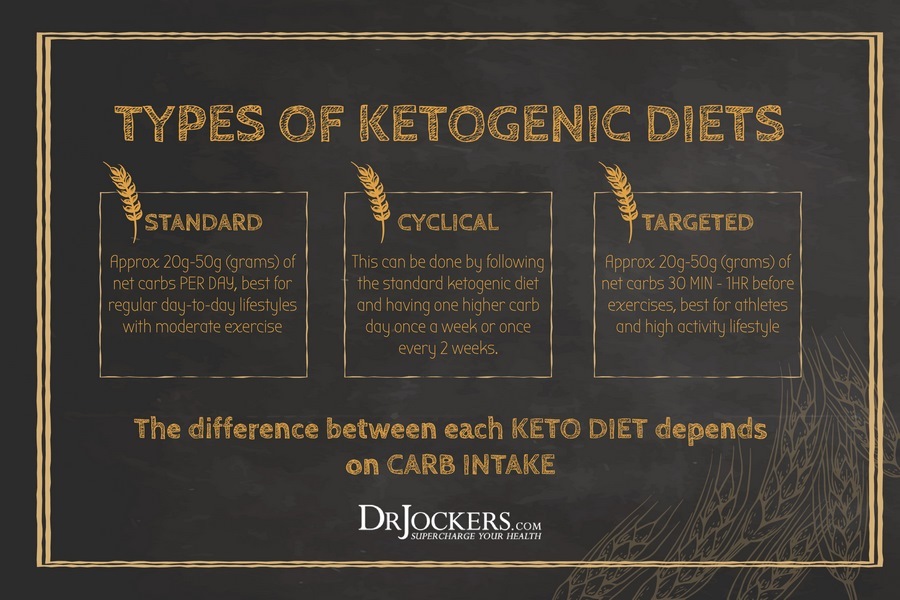
Deciding What Works For You
Deciding whether or not you want to follow a standard or cyclical ketogenic diet is highly dependent on your current needs.
For people who are just starting out on a ketogenic diet, I would recommend following the standard ketogenic diet for the first 2-4 weeks until your body is keto-adapted (read this article to understand when you are keto-adapted). Once you begin to feel good on a ketogenic diet, then you can try a higher carb day to cycle out and see how you feel.
In general, I find that most people feel much better when they periodically cycle out of ketosis. How often you cycle out can vary by person so you have to do some experimentation here.
Try the following cycles: 2x/week, 1x/week, 1x/2 weeks, and up to once every month. I find that most people do well with the once per week cycle.
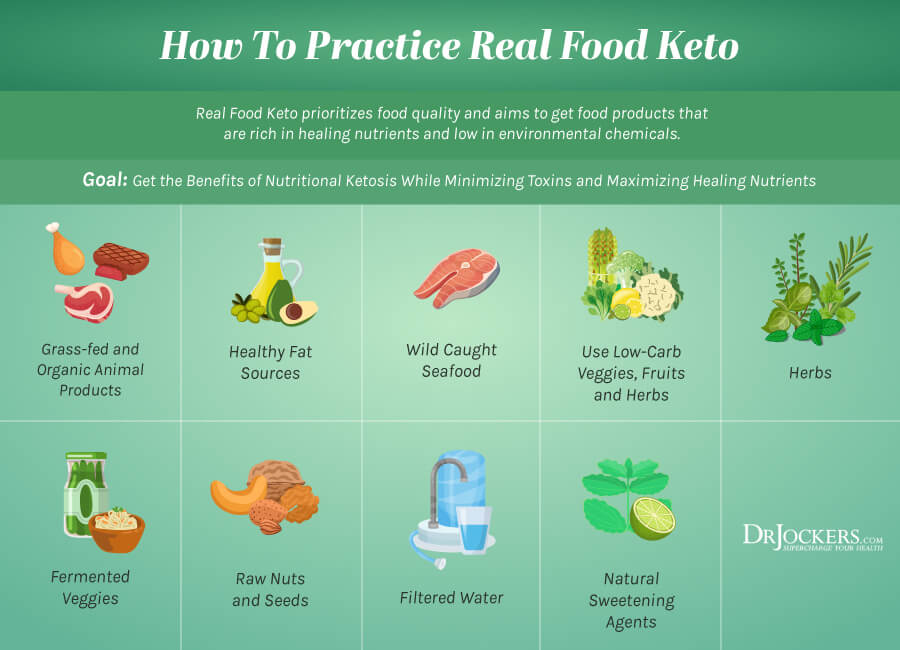
Why Cycling May Be Advantageous
Cycling is a relatively new concept. It is thought that because the ketogenic diet mimics a starvation state, our bodies have a stress response when in a prolonged state of ketosis.
When the body constantly perceives that it is in a starvation state, you will have a higher tendency to go into fight-or-flight mode. This chronic stress state can have negative effects on thyroid function, sex hormone balance, and other aspects of vitality.
By periodically cycling out of ketosis, it is thought to replenish glycogen stores and signal the body that there is not actually a shortage of food and thereby negating many of the side effects associated with the stress response of starvation.
The goal is to eat just enough carbs to replenish glycogen stores without contributing to weight gain.
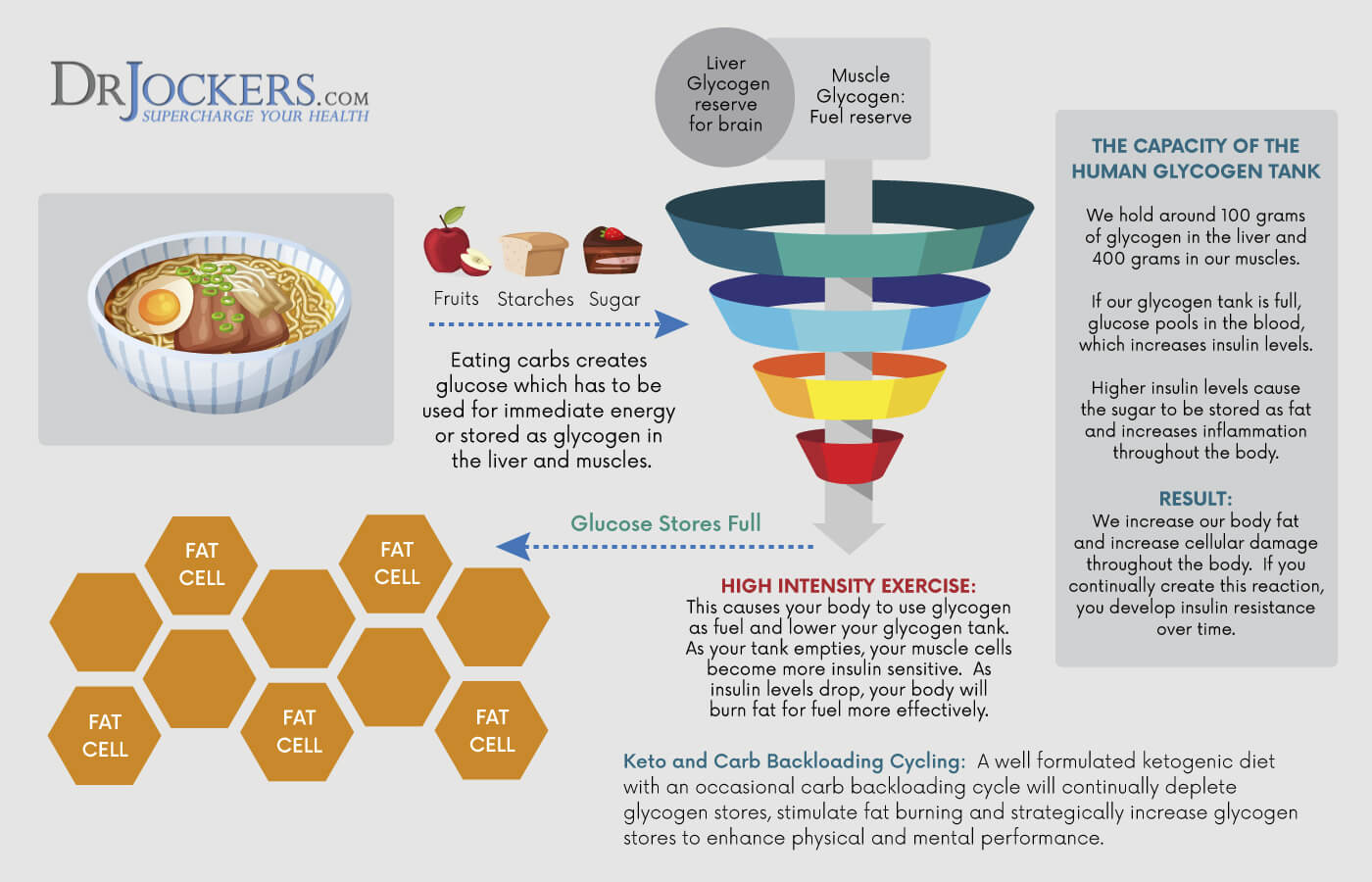
Ketogenic Vs. High Protein
Many people make this mistake when they begin a ketogenic diet: eating too much protein. A ketogenic diet is actually a high-fat diet with only a moderate amount of protein.
This is absolutely critical because consuming too much protein can negate the benefits of being ketogenic. One of the biggest problems is that excess protein can actually elevate blood sugar and pull you out of ketosis. This is due to a biological process called gluconeogenesis where protein is inefficiently converted into glucose (3).
While a high-protein diet can be beneficial for building muscle and potentially losing some weight, becoming keto-adapted is simply not possible. Appropriate protein levels are about 0.8-1.2 grams per KG of bodyweight, where reaching the higher level of this range should be on days when you are active or performing intense exercise.
For high-level athletes that incur higher amounts of muscle damage, a range of 1.5-2 grams of protein per KG of bodyweight can sometimes be followed while maintaining a ketogenic state. Again, the best way to determine the right balance for you is to measure your ketone levels.
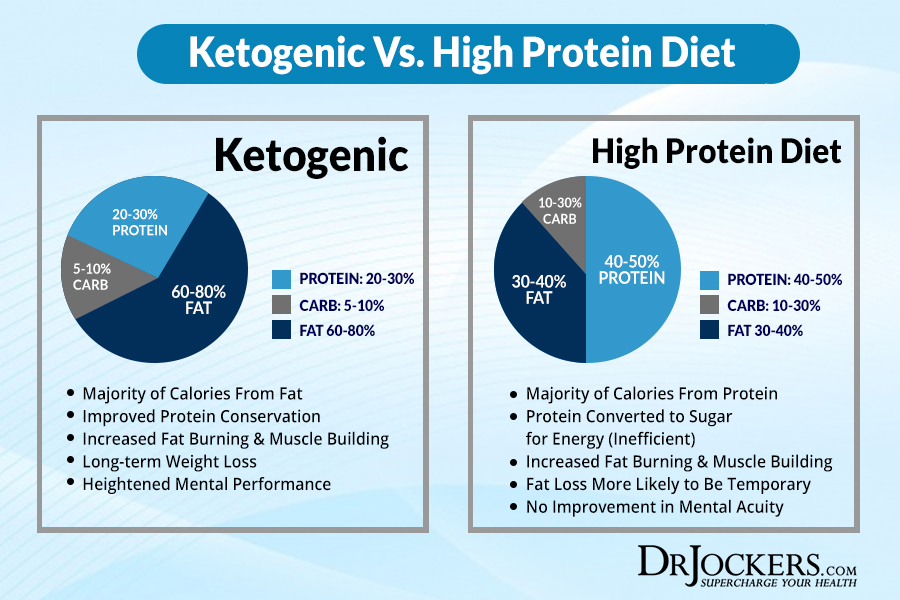
Ketogenic Vs. Low Carb
The difference between ketogenic and low-carb diets is kind of like the rule you learn in math class about squares and rectangles. All ketogenic diets are low-carb but not all low-carb diets are ketogenic.
The goal of a ketogenic diet is to drop blood sugar low enough to where the body preferentially uses fat for energy over glucose. For most people, this requires an intake of about 20-50 net carbs in a day. Many low-carb diets allow for the consumption of up to 100 grams of carbs per day.
While some people may go into ketosis on a low-carb diet, many people just end up chronically hypoglycemic and feeling awful.
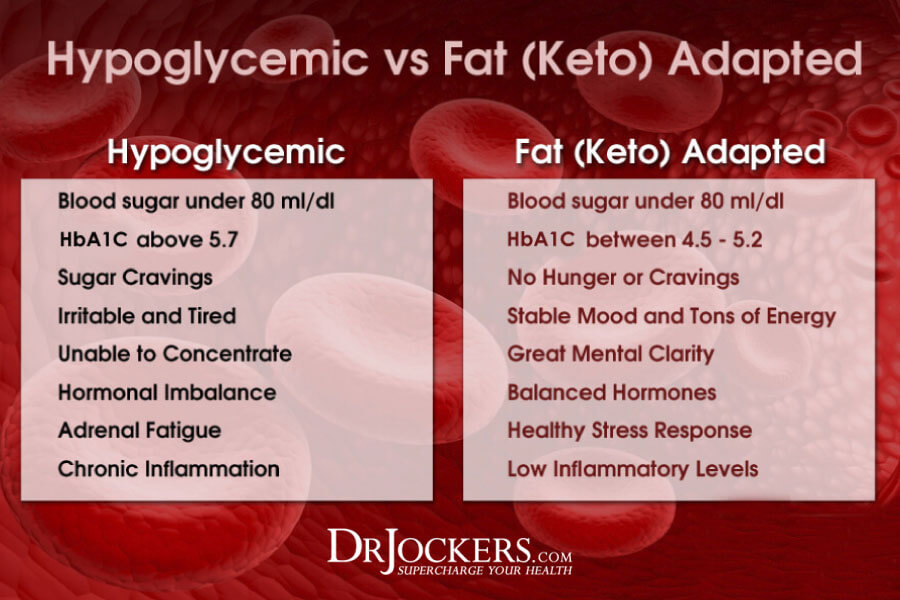
Keto-Adaptation
Keto-adaptation is the process your body goes through during the first 2-4 weeks of following a ketogenic diet. This is the period where your body actually has to recalibrate to burning fat for energy over glucose.
During this period, you can expect to feel minor side effects that will typically dissipate rather quickly. For more information on these side effects and how to avoid them, read this post.
A great strategy to track your body’s adaptation to a ketogenic diet is to monitor your ketone levels. For my top strategies on this check out this post where I break down each method and what my favorite is.
I also have an in-depth program that teaches you all the keys to getting keto adapted and burning fat for fuel. It is called the Navigating the Ketogenic Diet program
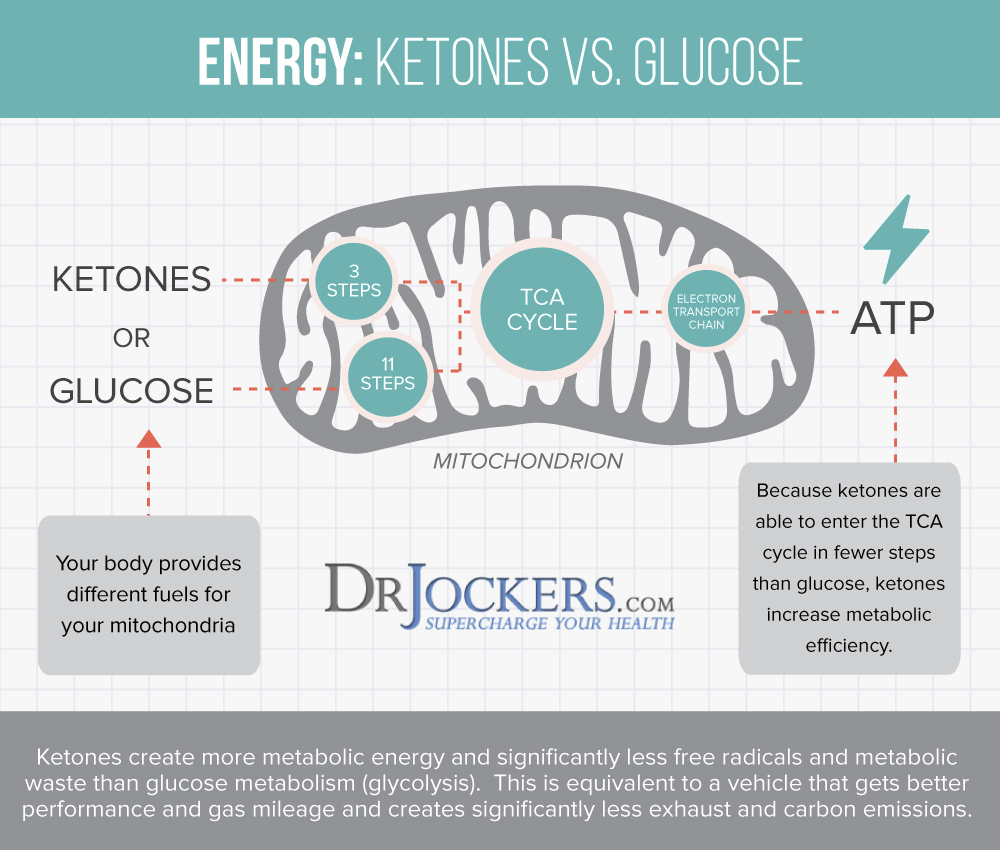

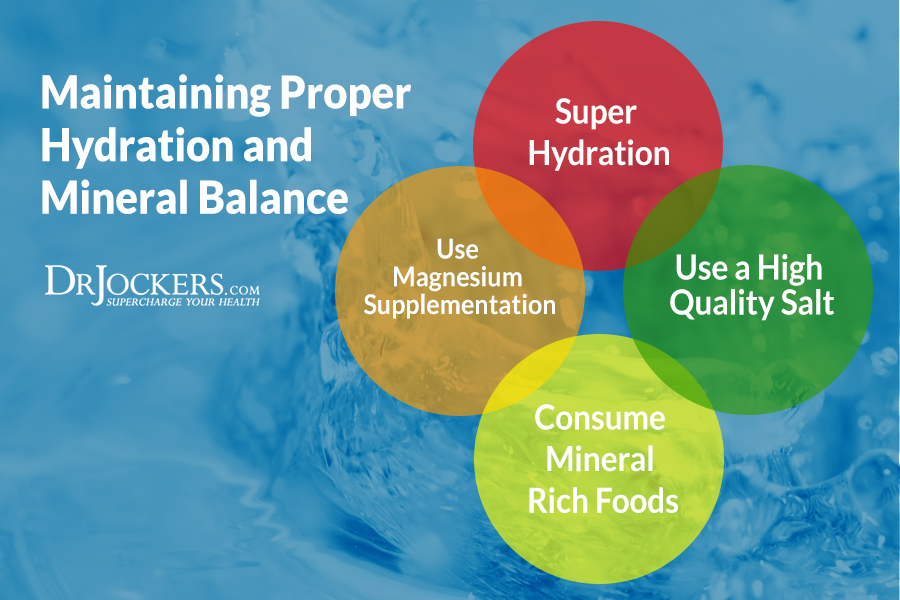

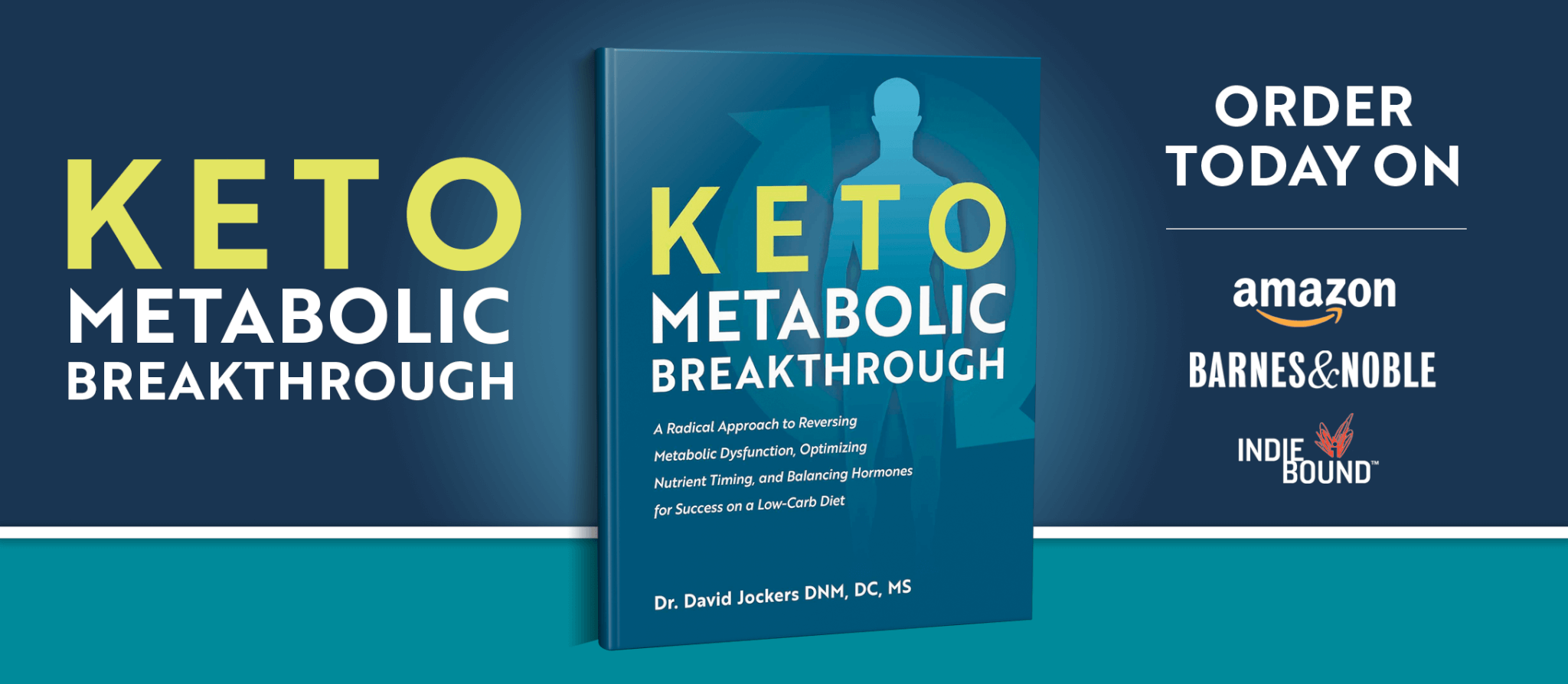


What sort of carb can someone eat during cyclic keto? Should it be complex carb or any sort?
Yes I discuss that in this article: https://drjockers.com/follow-cyclic-ketogenic-diet/
Dr Jockers, I have been diagnosed w/ IBS, Crons Desease,Diverticulosis snd Diverticulitis. I am into 2 weeks of the Keto Ignite and ACV Plan… I am having severe lower intestinal pain tge ladt 2 days and right now ad I text. Please help!…What do you think I should do?
Hi Linda, I am so sorry to hear that you are suffering with this pain. I would recommend that you speak with your doctor before continuing use of a product that is causing you discomfort. A function health practitioner can help you create a customized plan. Here is a helpful article: https://drjockers.com/functional-nutrition-tips-to-find-a-great-health-coach/
Hi Dr. Jockers,
Is a Keto diet/lifestyle safe if you no longer have a gall bladder?
Thank you!
That is a great question that we go over in detail in this article: https://drjockers.com/following-a-ketogenic-diet-without-a-gallbladder/
Dr Jockers
I have been following a keto diet since June 2020 I have lost 30kg gone off blood pressure medication, diabetes medication, cholesterol medication and recently Pariet for reflux cough
However over the past week my reflux cough is returning but I do not want to go back on medication
I also intermittent fasting everyday 17/7 hours and do not eat after 8pm
Can you suggest what I can do?
Sorry to hear this! Here is a helpful article with strategies to follow: https://drjockers.com/acid-reflux/